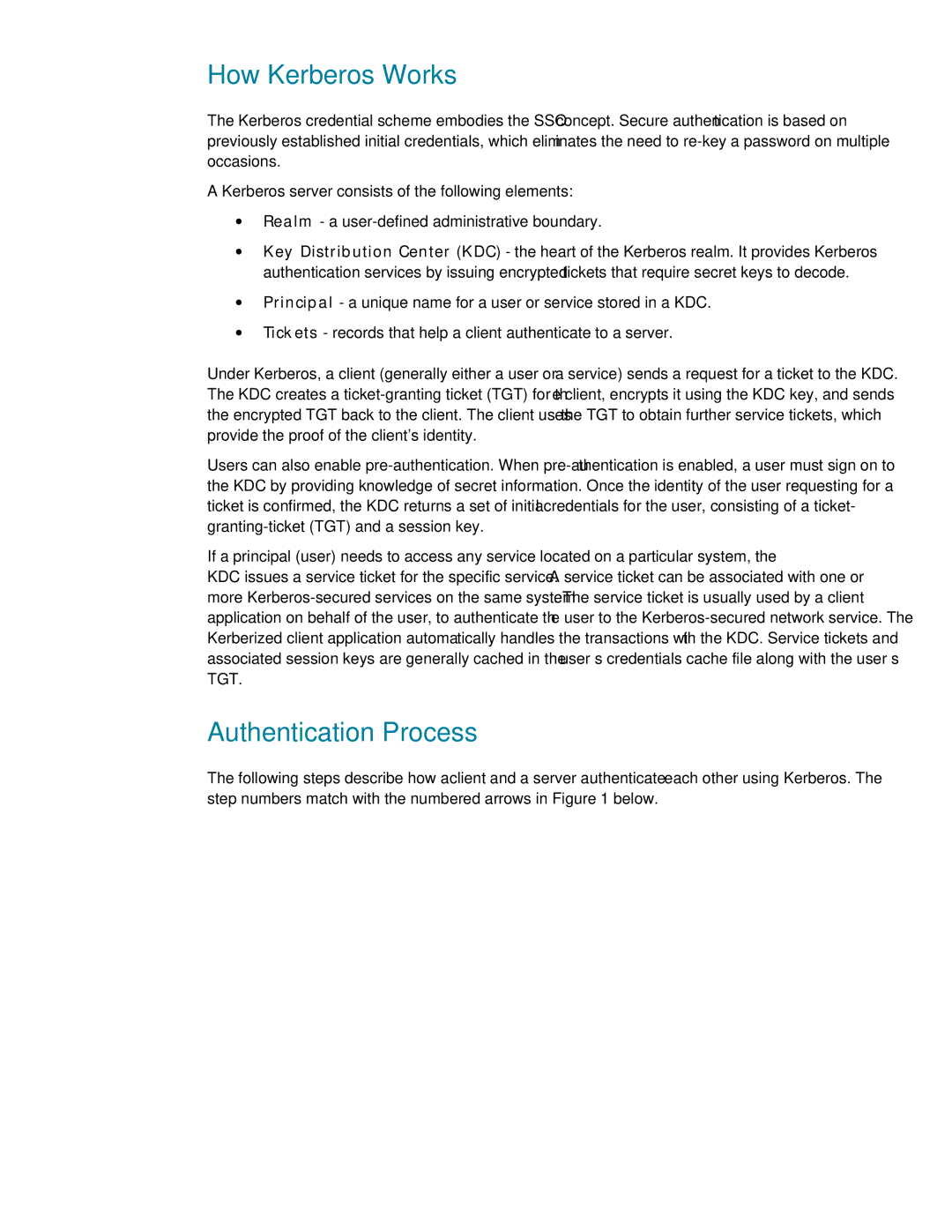How Kerberos Works
The Kerberos credential scheme embodies the SSO concept. Secure authentication is based on previously established initial credentials, which eliminates the need to
A Kerberos server consists of the following elements:
•Realm - a
•Key Distribution Center (KDC) - the heart of the Kerberos realm. It provides Kerberos authentication services by issuing encrypted tickets that require secret keys to decode.
•Principal - a unique name for a user or service stored in a KDC.
•Tickets - records that help a client authenticate to a server.
Under Kerberos, a client (generally either a user or a service) sends a request for a ticket to the KDC. The KDC creates a
Users can also enable
If a principal (user) needs to access any service located on a particular system, the
KDC issues a service ticket for the specific service. A service ticket can be associated with one or more
Authentication Process
The following steps describe how a client and a server authenticate each other using Kerberos. The step numbers match with the numbered arrows in Figure 1 below.
